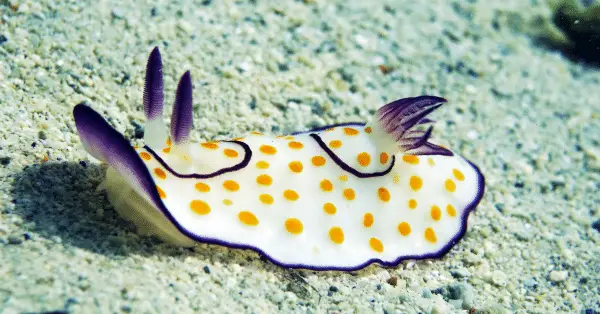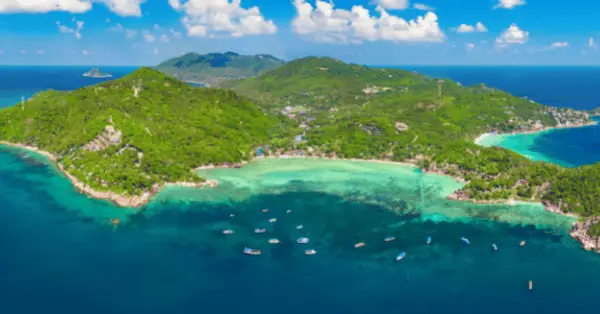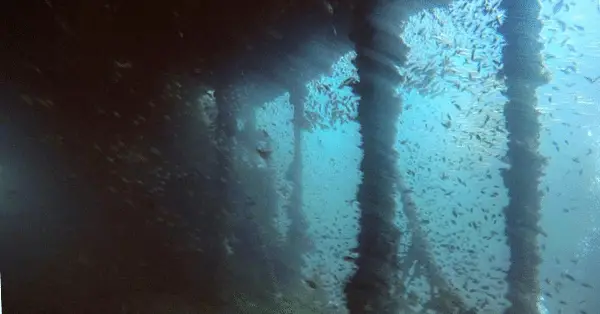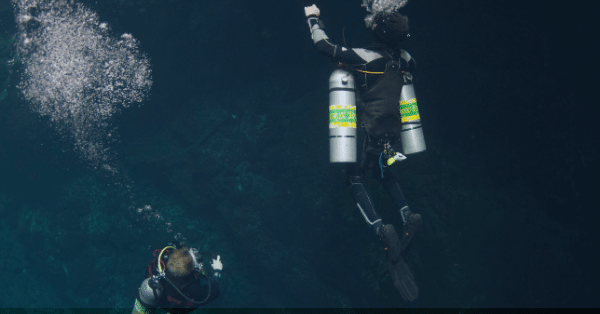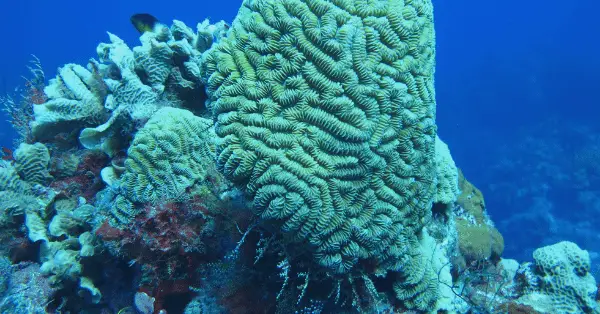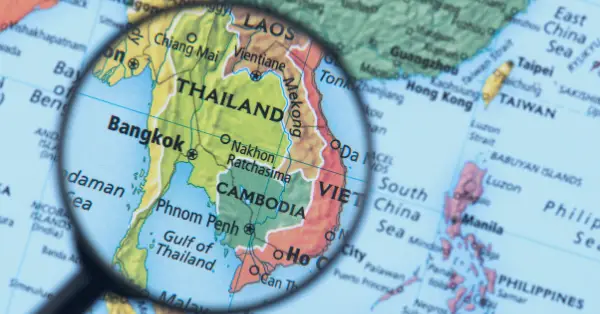Scuba Diving with Penguins: When, where, and how?
Scuba diving opens up a world where you can meet some pretty cool marine life, and diving with penguins is on many divers’ wish lists.
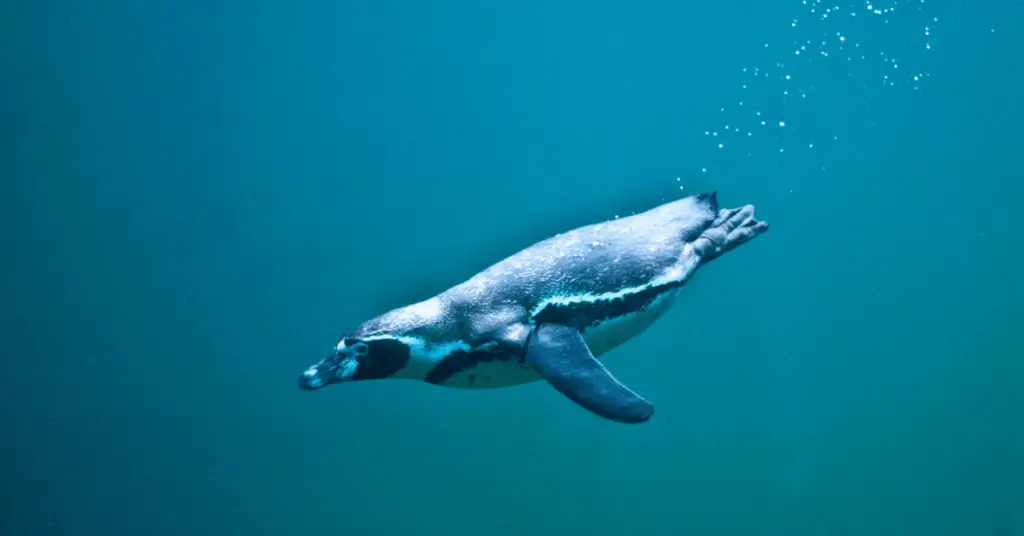
I had this dream and went to the Galapagos Islands, famous for its unique Galapagos penguins. I was really excited about the chance to see them underwater.
But, as it turns out, nature has its own plans. During my dive in the Galapagos, despite keeping my eyes peeled, the penguins were nowhere to be seen. This experience showed me how unpredictable and challenging it can be to spot wildlife while diving.
In this blog post, I’ll share more about trying to dive with penguins, the importance of protecting these creatures, and some tips on where you might have better luck seeing them in their natural habitat.
11 Interesting Facts about Penguins
Penguins are fascinating birds that dive, making them unique in the bird world. They’re known for their black and white coloring and ability to thrive in some of the coldest parts of the world. Here are some key facts about these amazing diving birds:
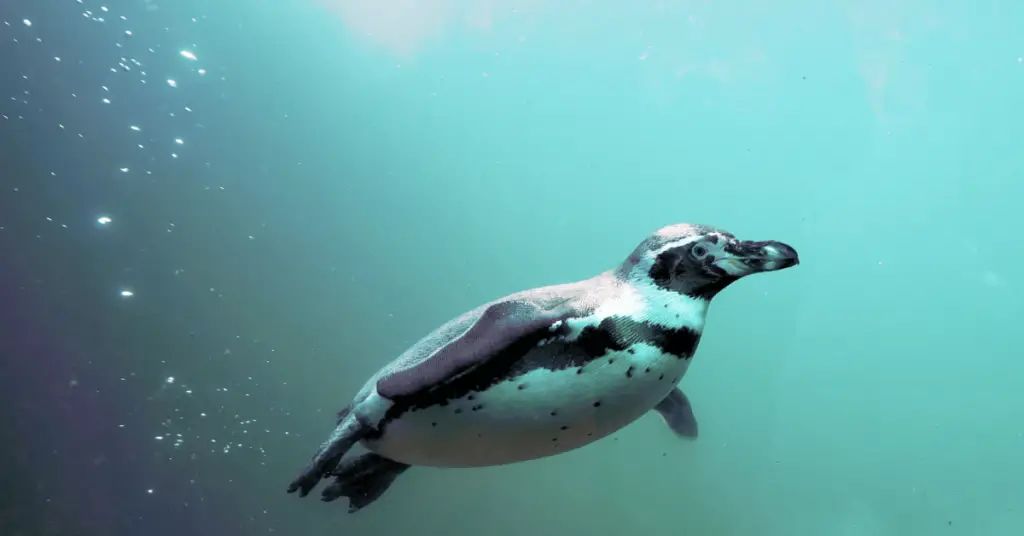
- Habitat and Distribution: Penguins are primarily found in the Southern Hemisphere. The only exception is the Galápagos penguin, which is found north of the equator.
- Species Diversity: There are 18 recognized species of penguins. This number includes the southern and northern rockhopper penguins, which were recently classified as distinct species.
- Origins: Penguins originated off the coasts of Australia, New Zealand, and some South Pacific islands around 22 million years ago.
- Size Variations: The smallest penguin, the Little Penguin, is only about 12-14 inches (30 – 35 cm) tall and is found off the coasts of Australia and New Zealand. On the other end of the spectrum, the emperor penguin can grow up to 45 inches (1.15 m) tall.
- Monogamous Nature: Penguins are monogamous but only for the breeding season. They may choose a different partner in the subsequent years.
- Swimming Skills: Penguins are excellent swimmers, using their wings as flippers. They spend a significant amount of their life in the ocean, though the exact percentage varies among species.
- Group Behavior: In the water, a group of penguins is called a raft, and on land, it’s known as a waddle.
- Conservation Status: Ten penguin species are listed as either vulnerable or endangered on the IUCN Red List. The African penguin and the Galápagos penguin are among those considered endangered.
- Diving Depth and Duration: Penguins are known for their impressive diving skills. While the specific diving depth and duration can vary among species, some penguins are capable of diving deep and staying underwater for extended periods. For example, Emperor penguins can dive to depths of over 1600 feet (500 meters) and stay underwater for up to 20 minutes.
- Life Underwater: Penguins spend a significant portion of their lives in the ocean. They are adept swimmers, using their wings as flippers to propel themselves through the water. This adaptation allows them to spend about 75% of their lives underwater, where they hunt for food and travel.
- Dive Types: Penguins perform various types of dives, such as traveling dives close to the surface and deeper dives for prey capture. Their dive profiles and time spent at different depths give insights into their foraging behavior and the marine environment they inhabit.
Top Destinations for Scuba Diving with Penguins
If you’re hoping to dive with penguins, there are a few key locations around the world where you’re more likely to have this unique experience. Each destination offers a different environment and species of penguins, making each dive a unique adventure.
Diving with Penguins in the Galapagos Islands
The Galapagos Islands, particularly Isabella Island, are renowned for their unique marine life, including the Galapagos penguin. The convergence of the nutrient-rich Cromwell Current with warmer waters around the island creates a diverse ecosystem, ideal for these penguins.
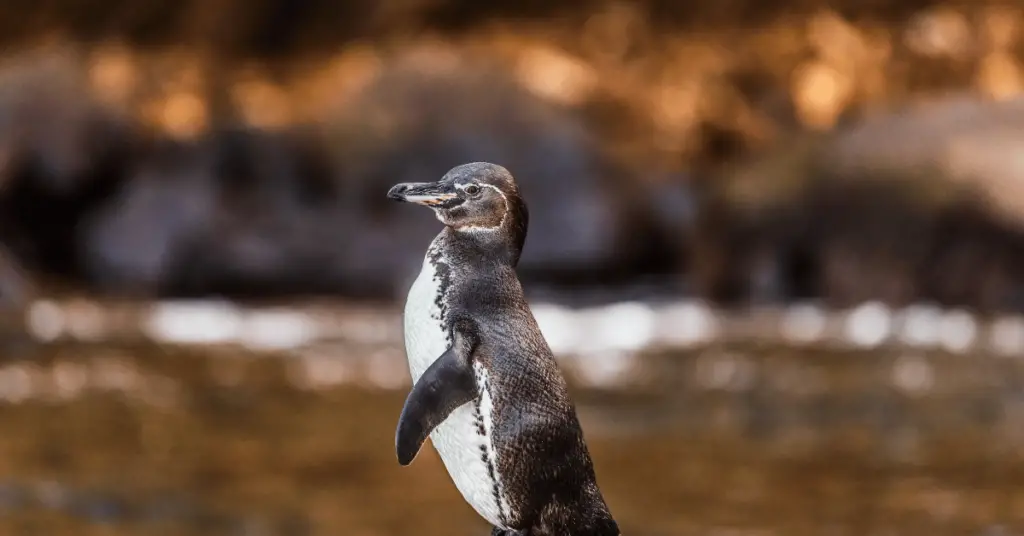
The Galapagos penguin is – as its name suggests – endemic to the Galapagos islands and can only be found there. Even though very similar-looking penguins live off the coast of Peru.
However, spotting them while diving can be a rare event. During my dive in the Galapagos, I was full of anticipation to see these elusive birds. Despite the promising conditions, I didn’t encounter any penguins underwater. This experience is a testament to the unpredictable nature of wildlife sightings in such a wild and untamed environment.
Fun Fact: The dive guides on my liveaboard went diving with a BBC camera crew for three weeks in the Galapagos to film a single scene with the penguins. This shows the challenge of capturing these swift and elusive creatures on camera.
Diving with Penguins in South Africa
The waters around South Africa are home to the African penguin, also known as the “jackass” penguin for its unique vocalizations. Popular diving spots like Boulders Beach near Cape Town and St. Croix Island near Port Elizabeth offer opportunities to see these playful birds. The temperate waters here are rich in biodiversity, providing a vibrant backdrop for penguin encounters.
Scuba Dive with Penguins in New Zealand
Offering a different penguin experience, New Zealand is known for the Fiordland penguin and the Little Blue penguin. Regions like the Otago Peninsula and Fiordland are prime areas for encountering these species. The diverse marine ecosystems of New Zealand provide not only the chance to see penguins but also a wide array of other marine life, making it a diverse and exciting diving destination.
Australia Penguin Diving
Australia provides a unique opportunity to dive with the smallest penguin species, the Little Penguin, also known as the Fairy Penguin. Places like Phillip Island in Victoria are famous for their penguin colonies. The temperate waters around Australia’s southern coast offer not only the chance to see these tiny penguins but also a rich array of other marine life.
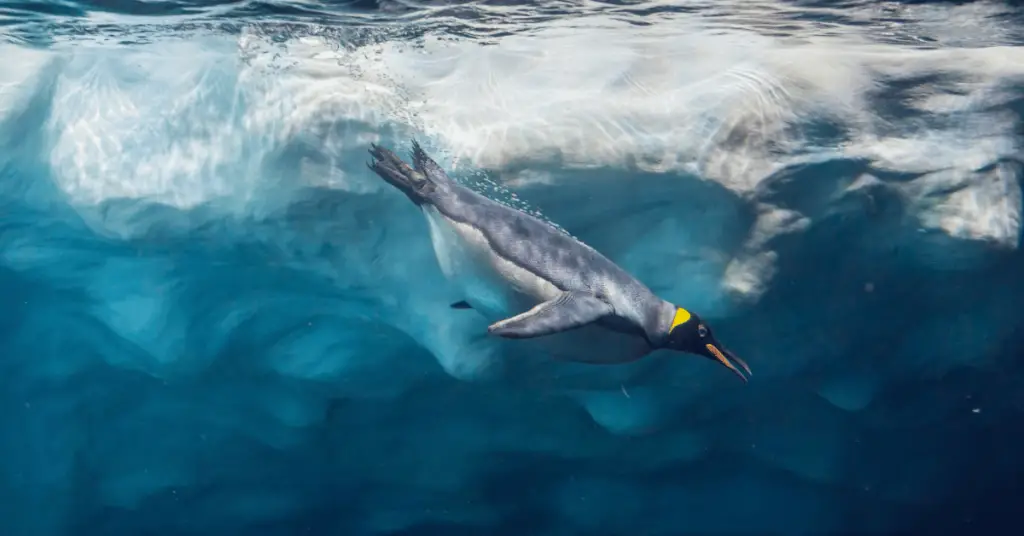
Ice Diving with Antarctic Penguins
For the ultimate penguin diving experience, Antarctica is unparalleled. Home to several species, including the Emperor and Adélie penguins, this icy continent offers a once-in-a-lifetime diving adventure. The extreme conditions require specialized cold-water gear, such as dry suits, and training, but the reward is witnessing penguins in an expansive, frozen wilderness. The pristine waters and the sheer number of penguins make Antarctica a top destination for enthusiasts.
The Challenge of Spotting Penguins Underwater
Diving with penguins is a dream for many, but it’s important to understand the challenges involved in spotting these elusive creatures underwater. Penguins are fast and agile swimmers, often darting through the water with surprising speed, which can make them difficult to observe closely during a dive.
Unpredictability of Wildlife: Penguins, like all wild animals, follow their own patterns and behaviors that are not influenced by our presence. Their appearances at dive sites can be unpredictable, varying with factors like time of day, season, and food availability.
Speed and Agility: Underwater, penguins are incredibly swift and agile. They can move quickly and change direction suddenly while hunting or evading predators. This agility, while fascinating to watch, can make it challenging for divers to keep up or predict their movements.
Environmental Factors: Visibility underwater can greatly affect the ability to see penguins. Murky waters, strong currents, and the depth at which penguins dive can all impact the likelihood of a successful sighting.
Patience and Respect: Successful penguin sightings often require patience and a respectful approach to their habitat. Keeping a safe distance and minimizing disturbance is crucial, as penguins are more likely to continue their natural behaviors when they feel secure.
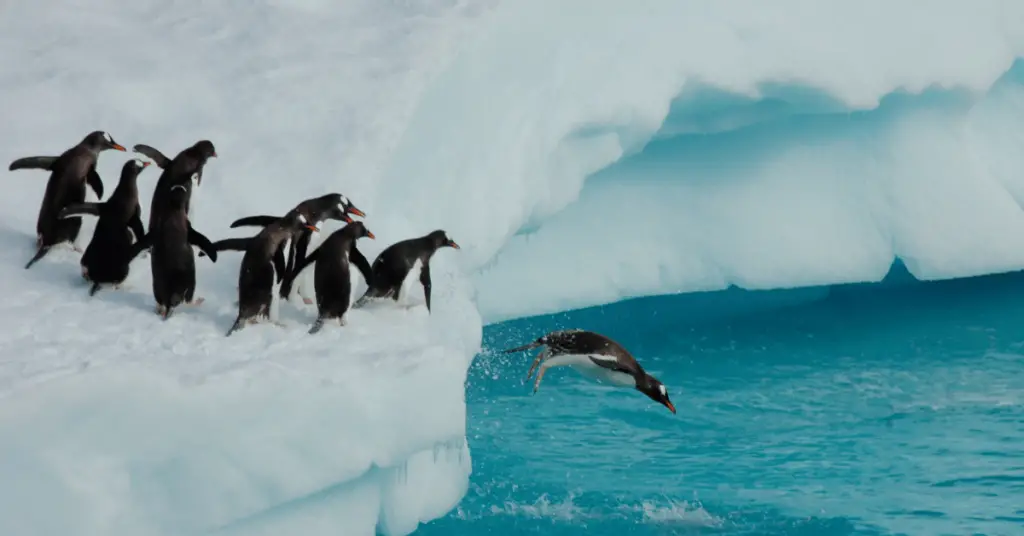
Preparing for Your Dive with Penguins
Diving in locations where penguins are found often requires specific preparation due to the unique environments these birds inhabit. Whether you’re planning to dive in the temperate waters of South Africa or the icy seas of Antarctica, here are some key considerations to ensure a safe and enjoyable experience.
1. Appropriate Gear: The type of gear you’ll need varies significantly depending on the dive location. For colder regions like Antarctica, a dry suit is essential to protect against the frigid temperatures. In more temperate areas, a standard wetsuit may suffice. Additionally, consider other gear like hoods, gloves, and appropriate fins for maneuverability.
2. Dive Training and Certification: Certain locations, especially those with extreme conditions like Antarctica, may require specialized dive training and certifications. For example, PADI offers Dry Suit Diver and Ice Diver certifications, which can be invaluable for cold-water diving. Always ensure that your dive skills and certifications match the demands of the dive site.
3. Understanding Local Regulations: Many penguin habitats are protected areas with specific regulations to ensure the conservation of wildlife. It’s important to familiarize yourself with these rules, which may include restrictions on how close you can get to wildlife, allowable dive sites, and environmental guidelines.
4. Physical Fitness: Diving in challenging conditions requires good physical fitness. The ability to manage strong currents, cold water, and potentially long dives is crucial for a safe and enjoyable experience.
5. Local Knowledge: Utilizing the expertise of local dive guides can greatly enhance your chances of a successful dive. They can provide valuable information on the best times and locations for penguin sightings, as well as insights into the behavior of local marine life.
6. Environmental Awareness: As divers, it’s our responsibility to protect the underwater world. This means being mindful of our interactions with wildlife, avoiding touching or disturbing the marine environment, and adhering to responsible diving practices.
Penguin Conservation: A Global Concern
Diving with penguins is not just an exhilarating experience; it also brings divers face-to-face with the urgent need for the conservation of these remarkable birds. Penguins face various threats, from climate change and habitat loss to overfishing and pollution. Understanding these challenges is crucial for anyone passionate about these creatures and their future.
- Climate Change: Rising ocean temperatures are affecting penguin habitats profoundly. Changes in sea ice patterns, for instance, directly impact the breeding and feeding habits of species like the Emperor penguin in Antarctica. Penguins rely on specific conditions for nesting and accessing food, and any alteration in their environment can have severe consequences.
- Overfishing: Overfishing is a significant threat, leading to food scarcity for penguins. Many species depend on fish and krill as their primary food source and the depletion of these resources forces penguins to travel further and expend more energy to find food, impacting their health and breeding success.
- Pollution: Penguins are increasingly vulnerable to pollution, particularly oil spills and plastic waste, which can lead to poisoning, entanglement, and habitat destruction. These incidents not only have immediate detrimental effects but can also disrupt the delicate balance of marine ecosystems.
- Human Disturbance: As human activities expand into penguin habitats, these birds face additional stress. Disturbance from tourism, coastal development, and fishing activities can disrupt breeding colonies and feeding areas.
- Conservation Efforts: Efforts to protect penguin populations include establishing marine protected areas, enforcing sustainable fishing practices, and conducting research to better understand penguin ecology and behavior. Conservation organizations and researchers are working tirelessly to address these challenges, but they need the support of the global community.
How Divers Can Help Conserve Penguins
As divers, we can contribute to penguin conservation in several ways. This includes supporting eco-friendly tourism, participating in citizen science projects, spreading awareness about penguin conservation issues, and contributing to organizations that work towards marine conservation.

